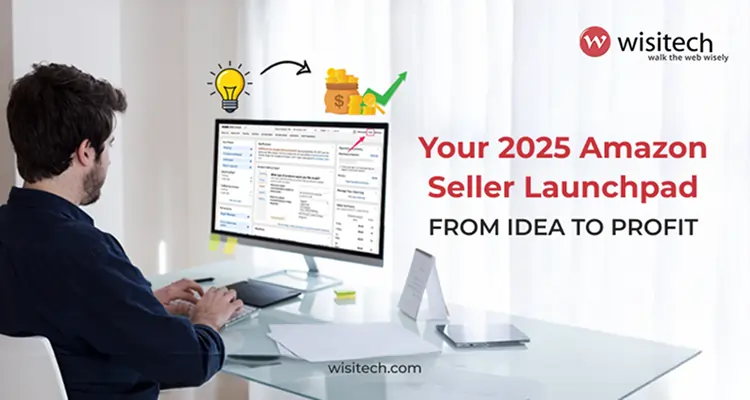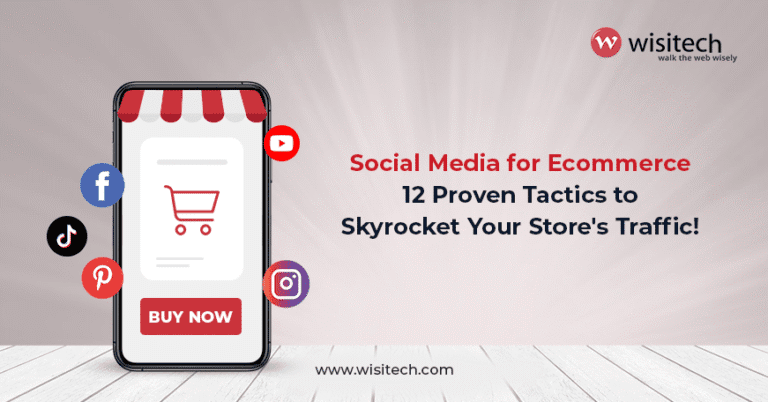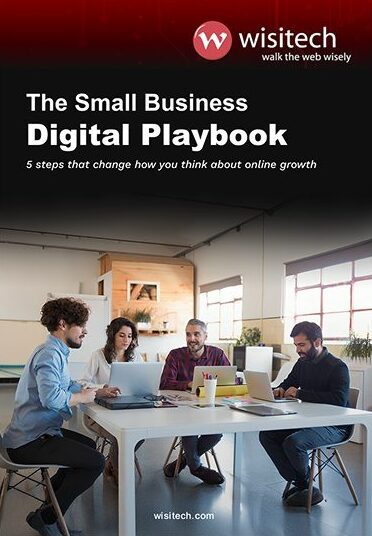Selling on Amazon in 2025 still looks like one of the best ways to reach millions of shoppers quickly, but it’s also changed a lot. New features, tougher competition, and smarter algorithms mean a good product alone isn’t enough. You need product-market fit, great listings, and a plan for promotion and logistics. This guide walks you through the practical steps to launch and grow a storefront that can actually make money.
Why Amazon Matters (Quick numbers)
Before we jump into the how, here are three recent facts worth keeping in mind:
- In 2025, the U.S. e-commerce industry is forecast to generate around $1.35 trillion in revenue. This marks a significant rise from previous years, reflecting continued strong growth in online retail adoption.
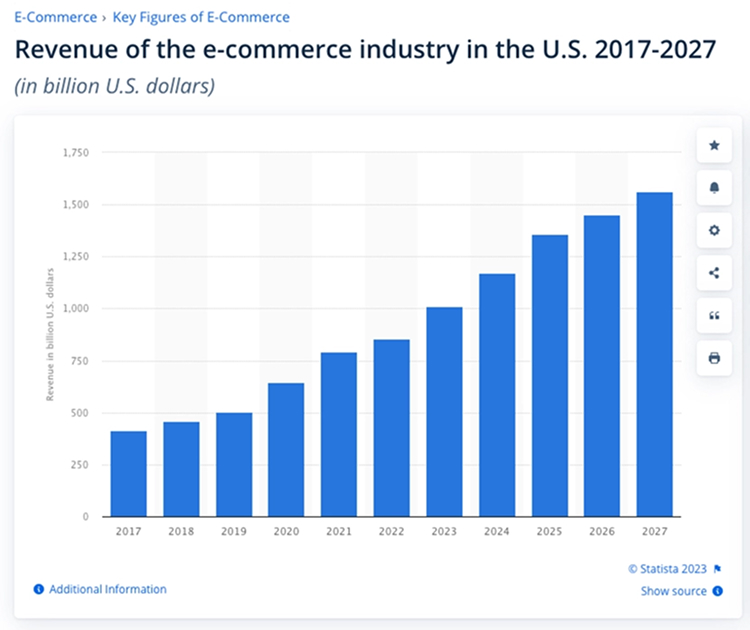
The U.S. e-commerce market is booming, with 2025 forecasted to bring record-breaking $1.35 trillion in sales.
- There are roughly 1.9 million active sellers on Amazon today, and an estimated 1.3 million new sellers are expected to join by the end of 2025, which highlights both opportunity and competition.
- Independent sellers in the U.S. averaged more than $290,000 in annual sales on Amazon in 2024, and over 55,000 independent sellers topped $1M in sales. That shows high upside for well-executed businesses.
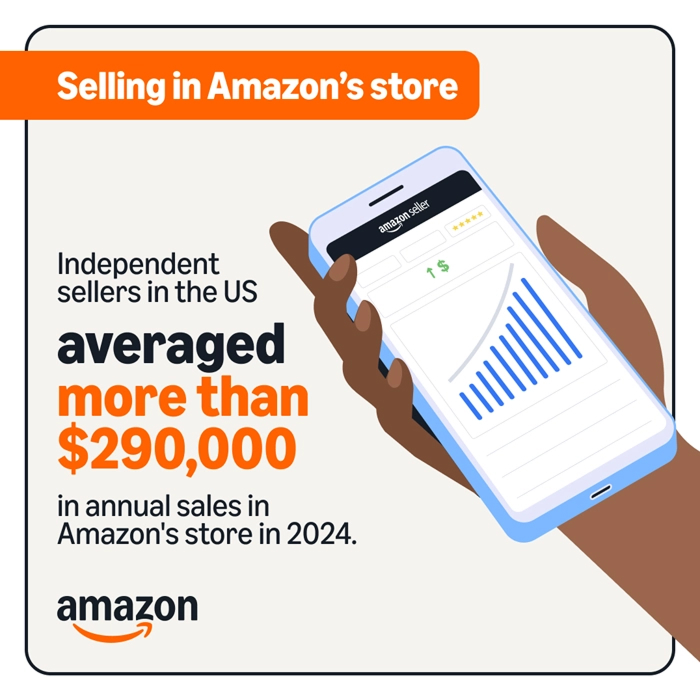
- According to eMarketer, Amazon’s US retail eCommerce sales are projected to reach $530.88 billion in 2025, accounting for an impressive 41.1% of the nation’s total online retail market.
Use these numbers as motivation: the audience is massive, but so is the competition. Smart listing and optimization matter
Step 1: Pick the Right Product and Validate Demand
Start with research. Use tools like Amazon’s Best Sellers lists, category reports, and third-party platforms ( Jungle Scout, Helium 10 , etc.) to see what’s selling and where margins exist. Validation tactics:
- Look for steady demand rather than flash trends.
- Check top sellers for reviews, pricing, and fulfillment approaches.
- Find a differentiator – size, bundle, packaging, or unique value.
Small batch testing is inexpensive and fast – launch a small inventory and measure conversion rates before scaling.
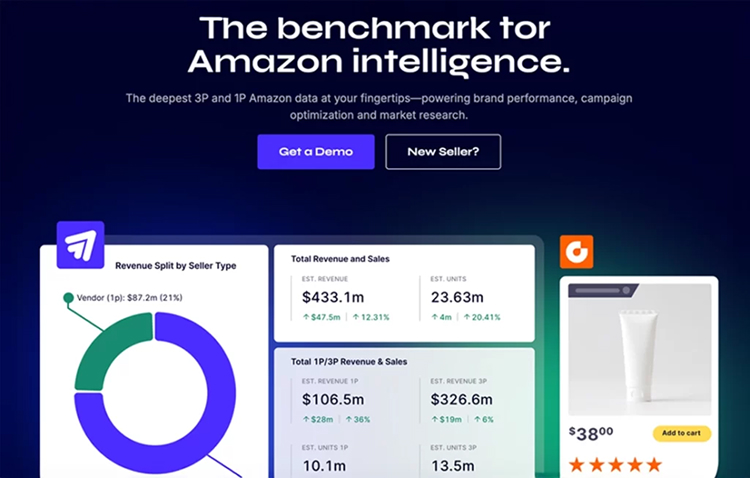
Step 2: Choose Your Fulfillment Strategy
Decide between Fulfilled by Amazon(FBA) and Merchant Fulfilled Network(MFN). In 2025, FBA remains a go-to for sellers who want prime access and hands-off delivery, while MFN helps lower fees and maintain control. Consider:
- FBA for volume and Prime shoppers
- MFN for heavier or specialized items that carry high FBA fees
- Hybrid approach: use FBA for best-sellers, MFN for slow movers
Remember: shipping speed and reliability directly influence buy box chance and conversions.
Step 3: Create Listings That Convert (the fundamentals)
Your listing is your storefront. Think of it like a landing page optimized to convert browsers into buyers.
Essentials:
- Title: Clear and keyword-focused, but readable. Include brand, main product name, key feature, size.
- Images: High-resolution photos with lifestyle shots, closeups, and an infographic of benefits. Use Amazon’s image guidelines.
- Bullet points: Prioritize benefits and uses. Keep them scannable.
- Product description: A short, scannable block that expands on benefits and uses.
- Backend keywords: Fill your search terms without repetition; use all available character space wisely.
This is where an Amazon listing optimization service can earn its cost: small tweaks to title, images, bullets, and keywords can lift visibility and conversions.
Step 4: Use Listing Optimization Tools and Services
Keyword research and performance monitoring are ongoing tasks. Tools and services help you:
- Find high-converting keywords
- Audit your listing health
- Test images and titles with A/B tests
- Monitor search rank and conversion
If you’re new or short on time, consider engaging an Amazon product listing optimization service to handle keyword strategy, content writing, and conversion improvements. A good service will focus on relevance, conversion rate optimization, and data-driven A/B testing.
Step 5: Launch Strategy and Early Traction
Getting initial traction is crucial. Strategies that still work in 2025:
- Sponsored Product Ads to target intent-driven buyers
- Early reviewer programs and legitimate review-garnering tactics (follow Amazon policy)
- Small promotions or coupons to boost conversion and organic rank
- Leveraging social or influencer traffic to create an initial surge
Don’t overspend on ads early. Track ACoS (ad cost of sale) and optimize campaigns weekly.
Step 6: Price Strategy and Profitability
Price competitively but protect margins. Monitor Buy Box dynamics and adjust price, shipping, and seller performance accordingly. Keep a close eye on:
- Amazon fees (FBA vs MFN)
- Shipping costs
- Returns and warranty expenses
A fast-growing seller understands unit economics – know your breakeven price and target margin.
Step 7: Reviews, Customer Service, and Brand Building
Reviews build trust and improve conversion. Provide clear instructions, great packaging, and responsive customer support. In 2025, shoppers expect:
- Fast replies to messages
- Easy returns
- Help with setup or troubleshooting
If you have or plan to create a brand, enroll in Brand Registry early to access A+ content and protect your trademark.
Step 8: Scaling Up Intelligently
When sales start, don’t scale blindly. Plan inventory, diversify SKUs, and expand into complementary products. Consider:
- International marketplaces (start with Canada, UK, Mexico)
- Bundling or multipacks to increase average order value
- Automating repricing and replenishment using software
Scaling is about systems, including supply chain management, inventory forecasting, and effective delegation.
Pitfalls to Avoid
- Over-reliance on one product or one platform channel
- Ignoring unit economics and ad ROI
- Poor image quality and weak SEO on listings
- Violating Amazon’s policies – account suspensions are costly
Quick Tools Checklist
- Keyword research: Helium 10, Jungle Scout, MerchantWords
- Listing images: professional photographer + mockups
- Ads: Amazon Advertising console for Sponsored Products and Sponsored Brands
- Analytics: Seller Central reports + third-party dashboard
A Smart Start, Not a Shortcut
Starting on Amazon in 2025 is less about a single hack and more about good processes: product validation, listing quality, and continuous optimization. If you want help with polish and technical lift, an Amazon listing optimization service can speed up your growth by improving visibility and conversions.
Wisitech helps sellers build these systems and modern listing optimizations so your store launches with the right foundation for growth. Contact us to learn how we can help you sell smarter on Amazon in 2025.


